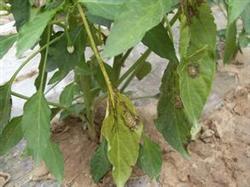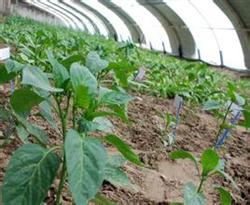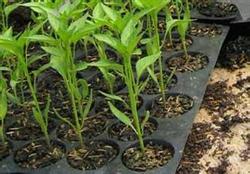Introduction to the symptoms and control methods of pepper blight

Control methods: 1. Pepper blight is mainly harmful to leaves, fruits and stems, especially at the base of stems. 2. The disease occurs in the seedling stage, mostly from the base of the stem, the disease part appears watery soft rot, the disease spot is dark green, and lodging above the disease part. Control methods: 1. Implement rotation, deep ploughing and soil improvement, combined with deep ploughing, increase the application of organic fertilizer, phosphorus and potassium fertilizer and micro-fertilizer, and apply appropriate amount of nitrogen fertilizer to improve soil structure. 2. Select disease-resistant varieties and seeds to strictly disinfect and cultivate sterile strong seedlings; 7 days before planting and on the same day, carefully spray the germicidal protective agent twice to clean the seedlings into the house and reduce the occurrence of diseases. 3, pay attention to observation, found a small number of diseased leaves and fruits, immediately removed the deep buried, found that the stem disease, immediately with 70% mancozeb 200 times solution to smear the disease spot, root out the pathogen. 4. Chemical control: soil disinfection should be done well before planting, combined with ploughing, spraying chlorpromazine, diproxone, metalaxyl and other agents to kill residual bacteria in the soil. If the disease has occurred, it should be sprayed with Anke, Fushuade and other medicine. it can also be sprayed with potassium dihydrogen phosphate and green leaf protection to improve the disease resistance of the plant itself.
- Prev

Seedling raising and transplanting methods of Pepper
1. Transplanting and irrigation. It can be transplanted after the disastrous weather in the first ten days of April, usually from April 15 to 25. When transplanting, pepper seedlings are required to be 16-17 cm high, 8 true leaves and 50-60 days old. Double plants in each hole, timely irrigation after planting seedlings to ensure the survival rate of planted seedlings. Replenish water in time according to soil moisture after transplanting for a week. 2. Ploughing.
- Next

It is not appropriate to transfer seedlings and control the growth of hot pepper.
Soilless cultivation is mainly based on the mixture of peat and vermiculite in the proportion of 3 ∶ 1 instead of soil and farm manure in the seedling tray. Put the mixed seedling substrate into the seedling tray, put several seedling trays equipped with seedling substrate together, add a plank on it, and press down a little harder.
Related
- Where is it suitable to grow horseradish in China? it is expected to see the middle altitude horseradish in Alishan.
- How to prevent tomato virus disease reasonably? (Control methods included)
- Many people like to plant towel gourd on the balcony. What are the main points of this method and management?
- What crops can chili peppers be mixed with?
- Fertilization techniques and matters needing attention in Tomato
- What are the grafting techniques for peach seedlings in spring?
- Harm and control methods of root swelling disease of Chinese cabbage
- What are the pests of sweet potatoes? How to prevent and cure it?
- Symptoms, causes and Control methods of navel Rot in Tomato
- The cause of "Cucumber rotten bibcock" in Farmers' planting Cucumber and its Control Plan

